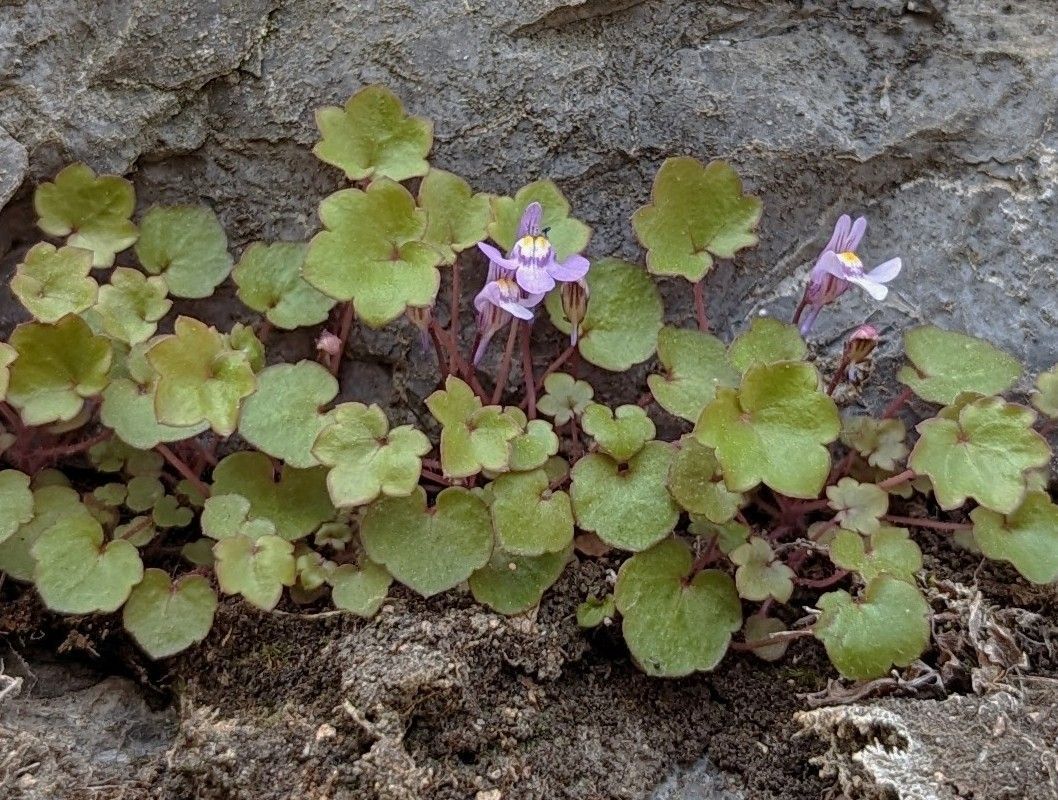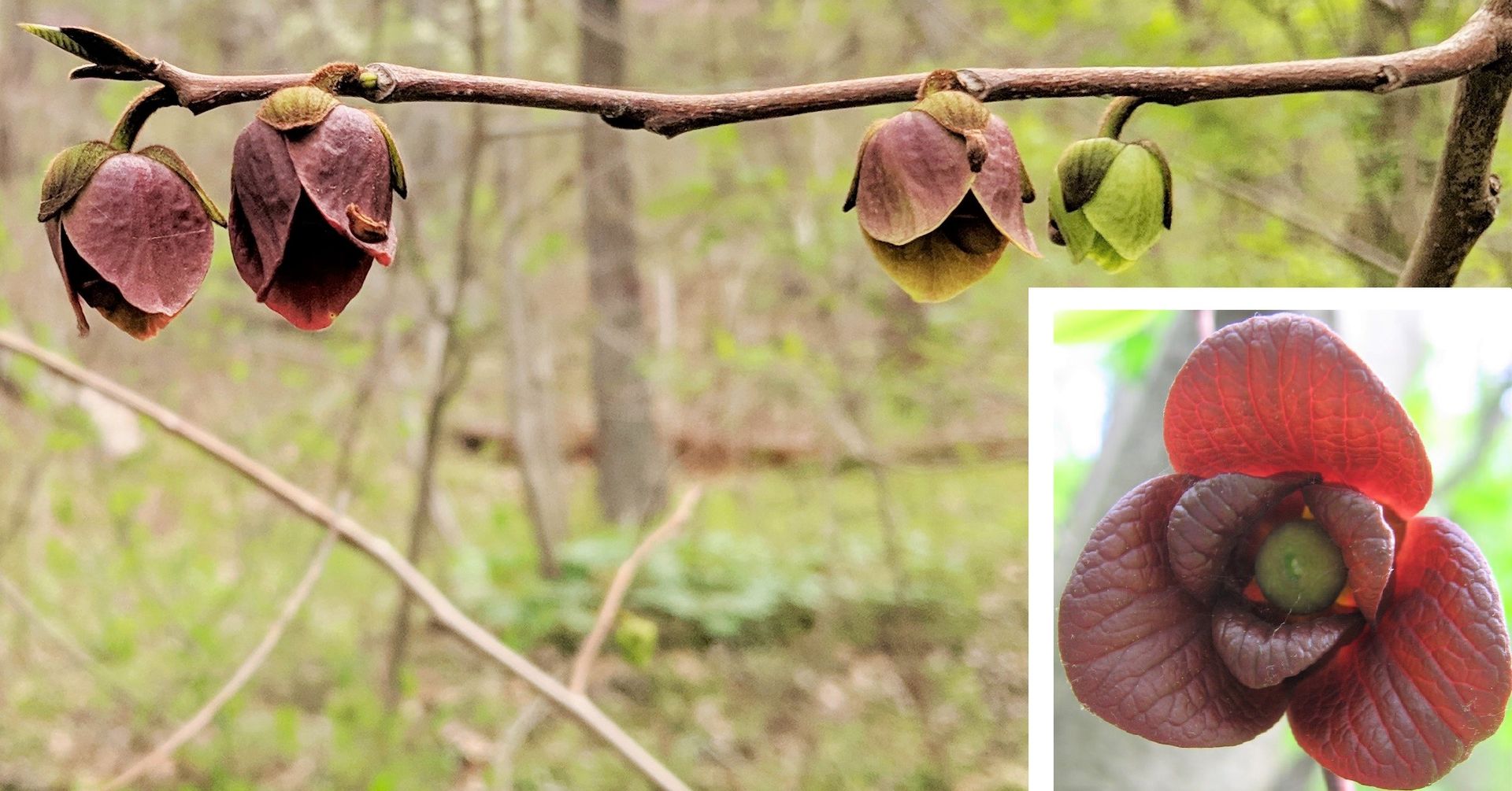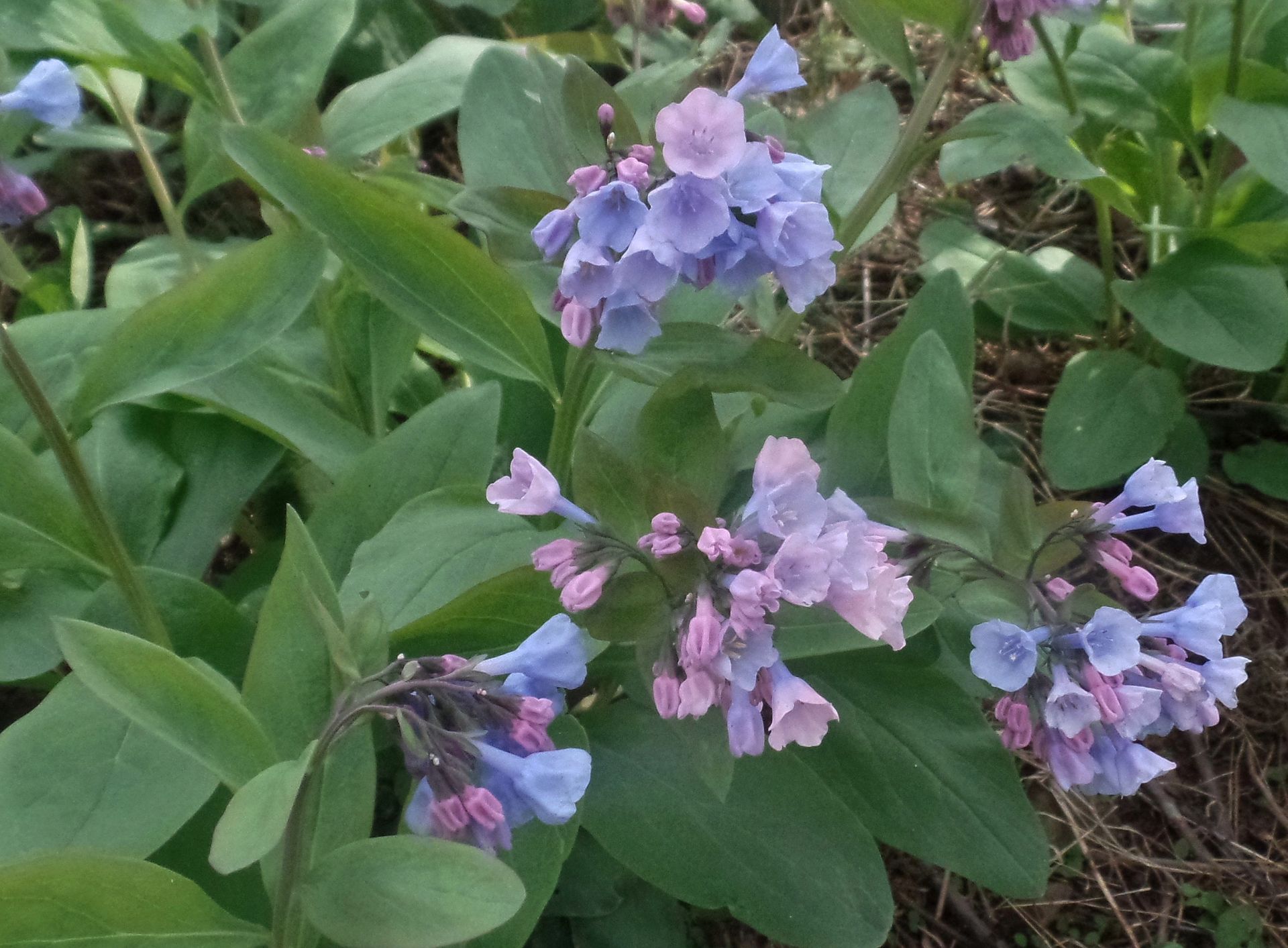What's that Flower: AT on the C&O Canal Towpath near Harpers Ferry in Spring
Article and photos by Richard Stromberg
The AT section east of Harpers Ferry (heading north on the AT) has unique vegetation for the AT because of its low elevation (220 feet above sea level) and because it is close to the Potomac River on one side and closer to the Chesapeake and Ohio Canal on the other. To see some of the plants better, go into some of the openings towards the river. Here are some of the plants to look for.
Before you climb the stairs to get to take the AT on the bridge beside the railroad tracks, look at the cracks in the stone wall when you walk under the railroad tracks. One plant growing there is a small, native fern, Purple Cliffbrake (Pellaea atropurpurea).
The main stem is purple. The pinnae (leaflets) are widespread and are not divided and do not have any lobes or teeth. Also growing in the cracks is Kenilworth Ivy (Cymbalaria muralis). It is not native, but is rare, so no danger of invasion. The light green leaves have three or five points. The flowers are about a quarter inch. They have five irregularly arranged blue or lilac petals with yellow in the middle.
Leaving the metal stairs down from the bridge over the Potomac, turn right to follow the AT along the Canal towpath.
The towpath runs close to the canal. The river is several yards on the other side of the towpath, mostly obscured by vegetation, but several openings let you see the river and flowers close to the river. Look for the flowers listed below. All are native unless otherwise noted.
Bladdernut (Staphylea trifolia) is a small tree with three-part leaves, the stem of the two side leaflets are much shorter than the stem of the end leaflet. Panicles of small white flowers droop in April.
Miami Mist (Phacelia purshii) grows up to 18 inches tall. It has half-inch flowers, cream-colored in the center surrounded by purple/blue. The “mist” refers to fringe on the petals.
Pawpaw (Asimina triloba) is a small tree with large leaves, some over a foot long. They are entire (no teeth or lobes) tapering to the stem. They alternate along the stem but tend to cluster at the end of branches. Flowers hang down from axils. They have three large outer petals and three smaller inner petals surrounding a mass of stigmas and the pistil in the center. They start out green and turn dark purple.
Starry False Solomon’s-seal (Maianthemum stellata) has a single erect or arching stem with several ovate leaves alternating along the stem. Its flower cluster at the end of the plant is unbranched, and the individual flowers a quarter of an inch across. The False Solomon’s-seal (M. racemosum) looks similar, but the flower cluster is branched and the individual flowers are smaller.
Hairy Beardtongue (Penstemon hirsutus) has white hair on the stems that can grow three feet tall. It has spikes of one-inch, tubular flowers atop the plant. The flower tube is narrow at the stem end and then abruptly widens, ending in two-part upper lips and three-part lower lips that flare from the tubes. The tubes are purplish, with no lines inside and the flaring lobes are white. It has four stamens under the upper lip. The fifth stamen is sterile and rests on the bottom of the tube and is hairy yellow.
Virginia Bluebells (Mertensia virginica) grow in masses on riversides like the Shenandoah River. The elliptical leaves can be eight inches long and two inches wide. The inch-long flowers are shaped like a funnel. They start out pink and turn blue as they open. Some may remain pink and some are white.
Jetbead (Rhodotypos scandens) is an invasive alien shrub. It has opposite leaves. The showy flowers grow at the end of branches. They are up to two inches in diameter and have four white petals.









